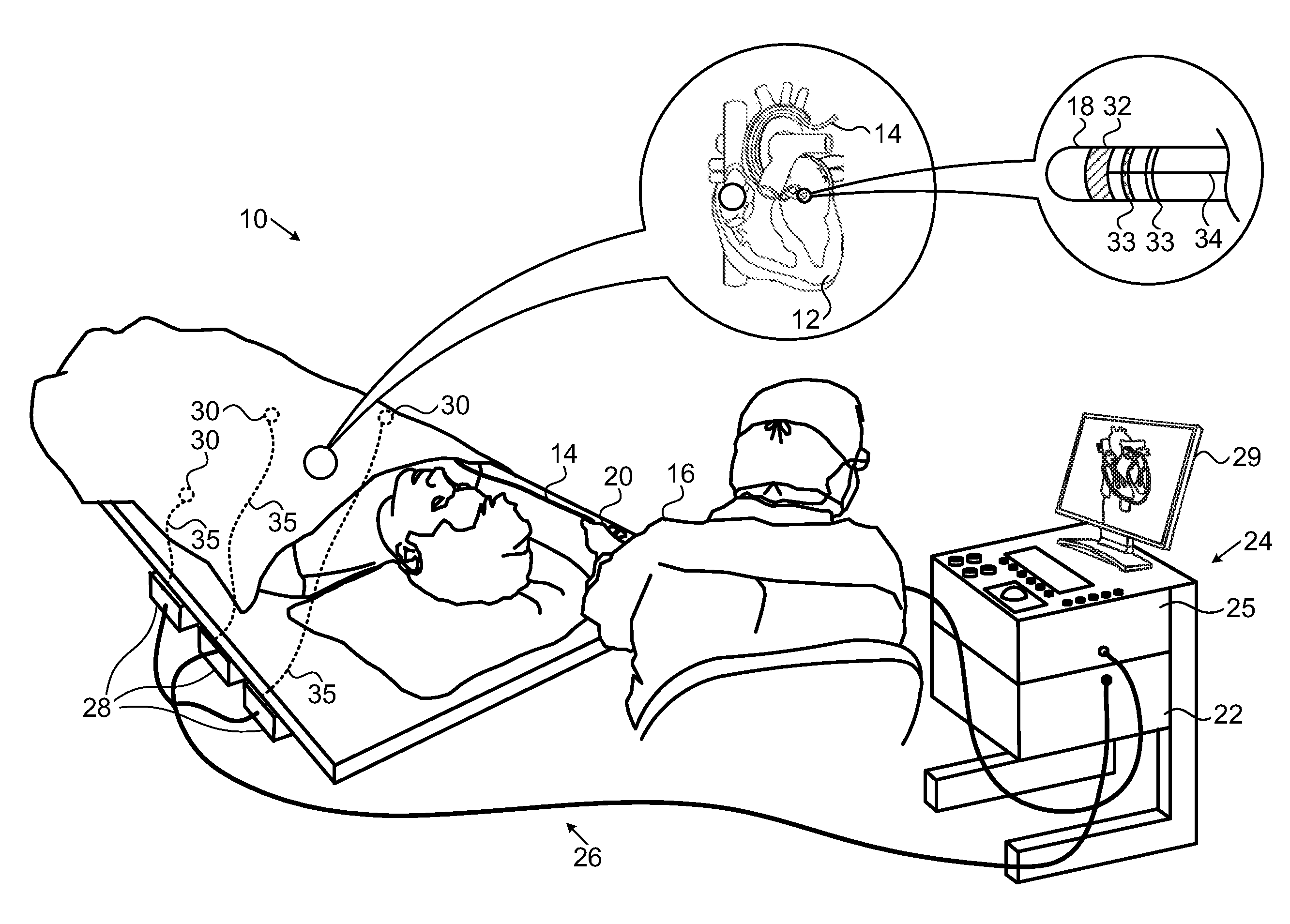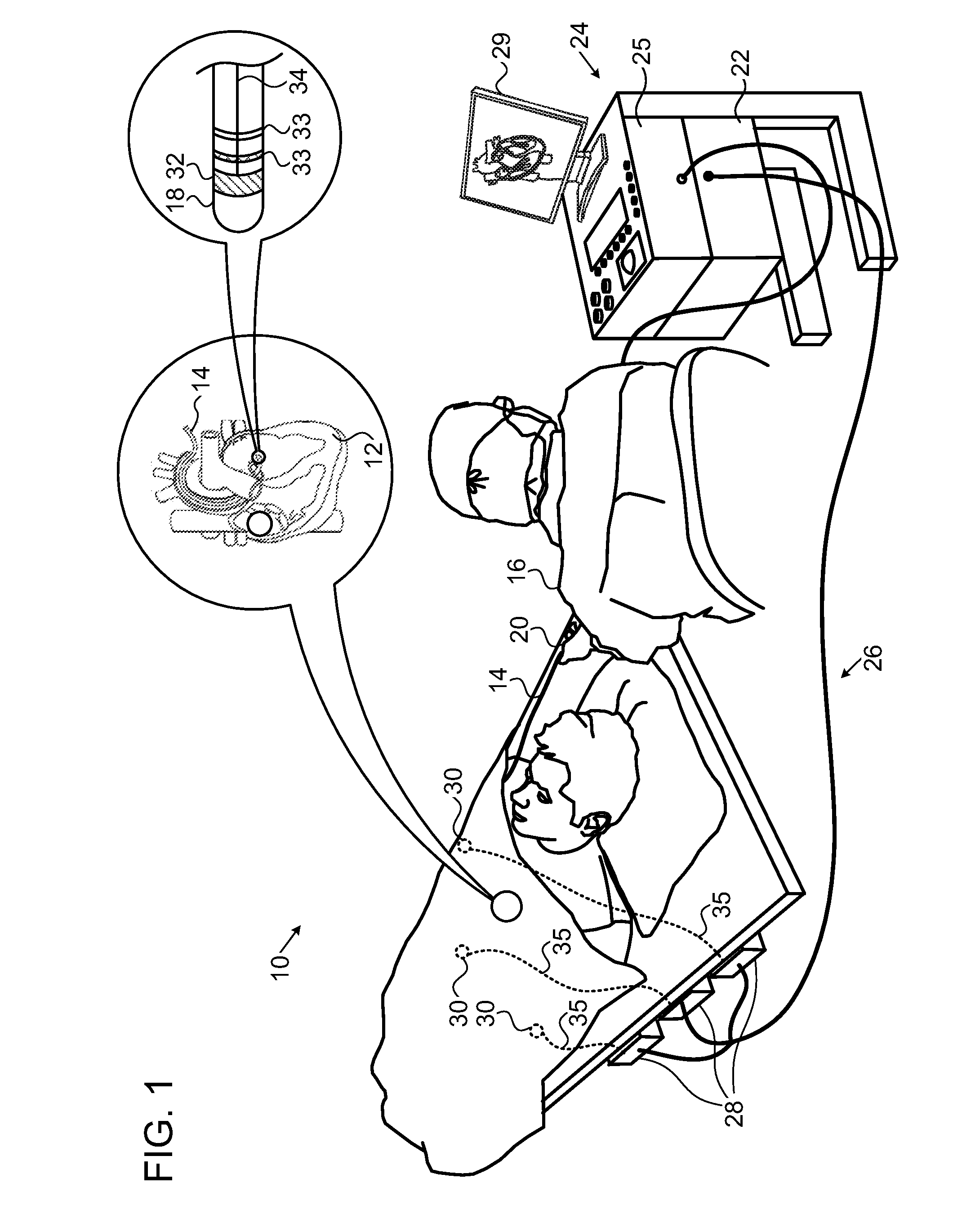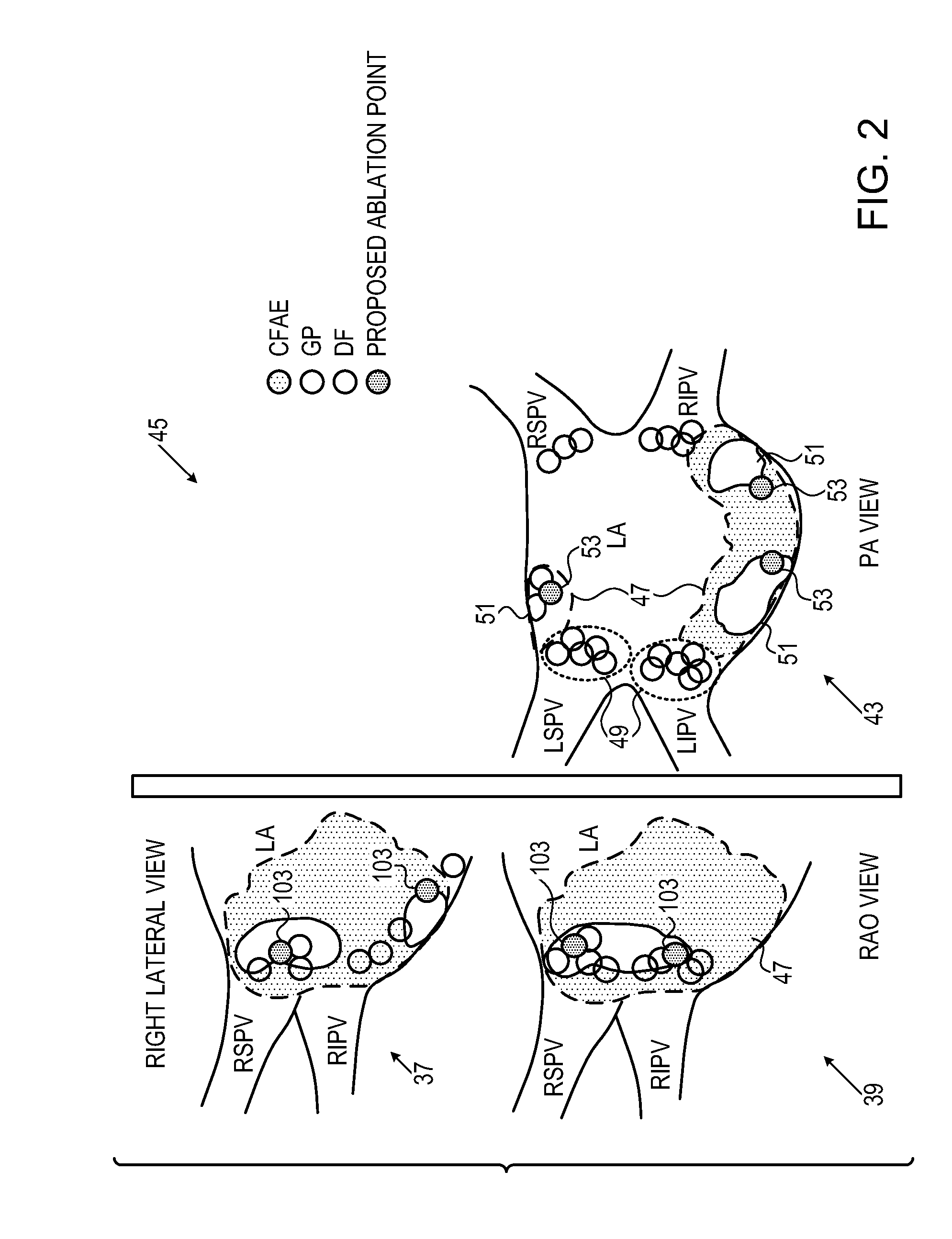Integrative atrial fibrillation ablation
a technology of atrial fibrillation and ablation, which is applied in the field of minimally invasive organ treatment, can solve the problems of affecting the normal cardiac cycle, asynchronous rhythm, and difficult procedures, and achieves the effect of reducing the risk of strok
- Summary
- Abstract
- Description
- Claims
- Application Information
AI Technical Summary
Benefits of technology
Problems solved by technology
Method used
Image
Examples
embodiment 1
Alternate Embodiment 1
[0070]With continued reference to FIG. 3, in this variant, the mapping process described in the third phase 87 is augmented by including a map of the contact force between the catheter and the endocardium during the electroanatomic mapping process (step 89). The cardiac catheter incorporates a pressure detector for sensing a mechanical force against the distal tip when engaging an ablation site. A contact force catheter of the sort described in commonly assigned U.S. Patent Application Publication No. 2011 / 0152856, which is herein incorporated by reference, may be used for this purpose. A suitable contact force catheter is available from Biosense-Webster as the THERMOCOOL® SMARTTOUCH™ Contact Force Sensing Catheter. Regions having points in which the contact force exceeds a threshold value are defined (CF regions) In these regions only local effects contribute are perceived in the sensor; far field effects are filtered out. A contact force of at least 7 g is su...
embodiment 2
Alternate Embodiment 2
[0073]Reference is now made to FIG. 6, which is a portion of the flow chart shown in FIG. 3, and which has been modified in accordance with an alternate embodiment of the invention. In this embodiment, detection of ganglionated plexi is enhanced during the mapping of CFAE and dominant frequency sites as performed in step 93 (FIG. 3) by high frequency stimulation at step 117. Stimulation at 20 Hz, 12 Volts, with a pulse width of 10 ms is suitable. Typically, the use of high frequency stimulation is focused on areas in which ganglionated plexi are anticipated, based on registration of images acquired by the above-describe imaging techniques.
[0074]Step 117 defines first regions containing ganglionated plexi by the use of high frequency stimulation, second regions containing CFAE and dominant frequency sites as described above with reference to step 93 (FIG. 3).
[0075]Step 93 is performed to define first intersections of second regions (CFAE) with third regions (DF)...
PUM
 Login to View More
Login to View More Abstract
Description
Claims
Application Information
 Login to View More
Login to View More - R&D
- Intellectual Property
- Life Sciences
- Materials
- Tech Scout
- Unparalleled Data Quality
- Higher Quality Content
- 60% Fewer Hallucinations
Browse by: Latest US Patents, China's latest patents, Technical Efficacy Thesaurus, Application Domain, Technology Topic, Popular Technical Reports.
© 2025 PatSnap. All rights reserved.Legal|Privacy policy|Modern Slavery Act Transparency Statement|Sitemap|About US| Contact US: help@patsnap.com



